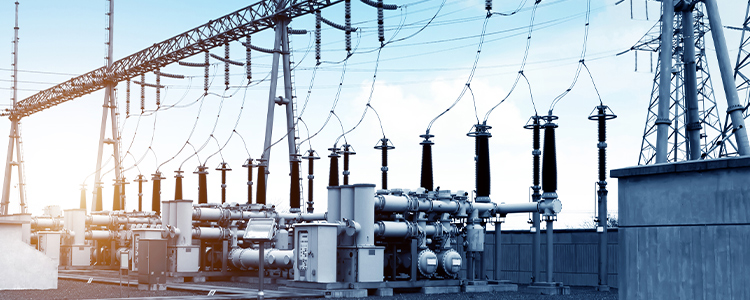- All
- Product Name
- Product Keyword
- Product Model
- Product Summary
- Product Description
- Multi Field Search


Views: 0 Author: Site Editor Publish Time: 2024-09-02 Origin: Site
Switchgear is a fundamental component in electrical systems, acting as the backbone for controlling, protecting, and isolating electrical equipment. From substations to industrial plants, the right switchgear ensures operational efficiency and safety. This article delves into the various types of switchgear available and their ideal applications, helping professionals make informed decisions for their projects.
Switchgear refers to a collection of electrical devices used to control, protect, and isolate electrical equipment in both high-voltage and low-voltage systems. These devices are crucial in ensuring the safety and reliability of electrical power systems.
Switchgear encompasses circuit breakers, switches, fuses, and disconnectors, all designed to handle the distribution and management of electrical power. It plays a vital role in protecting electrical circuits from overloads and short circuits, thus preventing equipment damage and ensuring safety.
Switchgear comes in various types, each suited for specific applications and environments. Understanding these types helps professionals choose the right switchgear for their needs. Here are the main types of switchgear:
High-voltage switchgear is designed for use in environments where voltages exceed 1 kV, typically found in power generation and transmission applications. This type of switchgear includes circuit breakers and disconnectors that manage the distribution of high-voltage electricity. It is essential for ensuring the safe and efficient operation of electrical grids, allowing for the control and protection of high-voltage circuits.
High-voltage switchgear is crucial in large-scale power plants and substations, where it helps in managing the flow of electricity from generation to distribution. Its robust design allows it to handle the high stresses and demands of high-voltage environments, ensuring reliability and safety in power distribution.
Medium-voltage switchgear operates in the voltage range of 1 kV to 36 kV and is commonly used in industrial and commercial applications. This type of switchgear typically includes circuit breakers, switch disconnectors, and fuses. It is designed to provide control and protection for electrical equipment in medium-voltage networks.
Medium-voltage switchgear is essential for managing the distribution of electricity in urban and industrial settings. It ensures the safe operation of electrical systems by providing necessary control and protection mechanisms, thus maintaining the integrity and efficiency of medium-voltage networks.
Low-voltage switchgear is used for voltages up to 1 kV and is widely used in residential, commercial, and light industrial applications. This type includes circuit breakers, contactors, and relays, designed to control and protect electrical circuits in low-voltage environments.
Low-voltage switchgear is integral to everyday electrical systems, providing essential control and safety features. It ensures the reliable operation of electrical devices and systems in homes, offices, and small industrial facilities, making it a staple in low-voltage applications.
Distribution switchgear is specifically designed for the distribution of electrical energy. It includes various devices such as circuit breakers, switches, and fuses that are used to manage the distribution of electricity in a safe and efficient manner. This type of switchgear is typically used in power distribution networks to ensure the reliable and safe delivery of electrical power.
Distribution switchgear is crucial for the efficient management of electrical power in both industrial and commercial settings. It ensures that electricity is distributed correctly and safely, preventing overloads and potential hazards in the distribution network.
Motor control switchgear is specifically designed to control and protect electric motors. It includes components such as motor starters, overload relays, and contactors, which are essential for managing the operation of motors in industrial and commercial applications. This type of switchgear ensures that motors operate efficiently and safely, with built-in protections against overloads and short circuits.
Motor control switchgear is vital in industrial settings where motors are extensively used for various applications. It provides the necessary control and protection, ensuring that motors operate reliably and efficiently, contributing to the overall productivity and safety of industrial operations.
Selecting the right switchgear is crucial for ensuring the safety, efficiency, and reliability of electrical systems. Several factors must be considered to make an informed decision.
First, assess the voltage requirements of your application. This involves determining whether your needs align with high, medium, or low-voltage switchgear. Each type is designed to operate within specific voltage ranges, and choosing the correct one is essential for optimal performance and safety.
Next, consider the environmental conditions where the switchgear will be installed. Factors such as temperature, humidity, and the presence of dust or corrosive elements can affect the performance and longevity of the switchgear. Selecting switchgear with appropriate environmental ratings ensures it can withstand these conditions and operate reliably over time.
Additionally, the application’s load requirements must be evaluated. This involves understanding the operational demands, such as the type and size of the loads, to ensure the switchgear can handle these without risk of overload or failure.
Finally, factor in the safety features required for your application. This includes considering the necessary protective devices and mechanisms that prevent electrical faults, ensuring the safety of both the equipment and personnel.
Selecting the right switchgear is crucial for ensuring the safety, efficiency, and reliability of electrical systems. By understanding the different types of switchgear available and considering factors such as voltage requirements, environmental conditions, load requirements, and safety features, professionals can make informed decisions that align with their specific needs. This careful selection process not only enhances the performance of electrical systems but also contributes to the overall safety and efficiency of industrial and commercial operations.
content is empty!